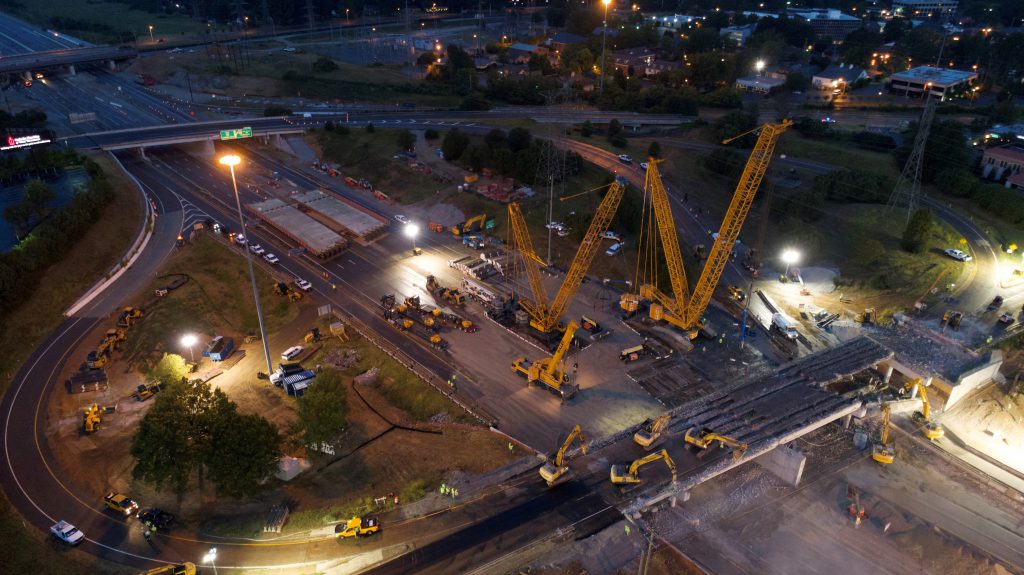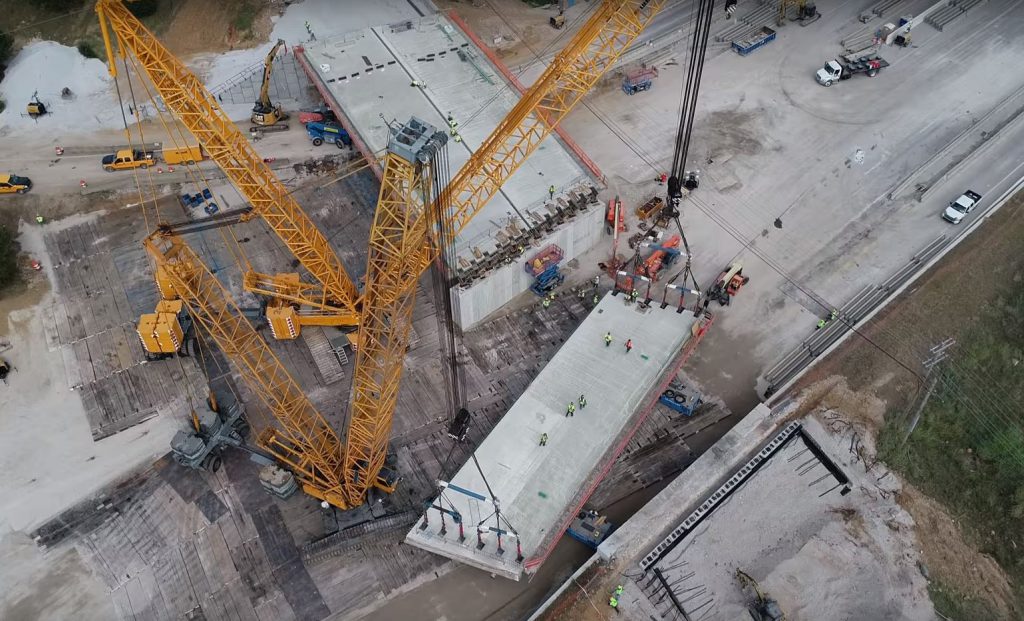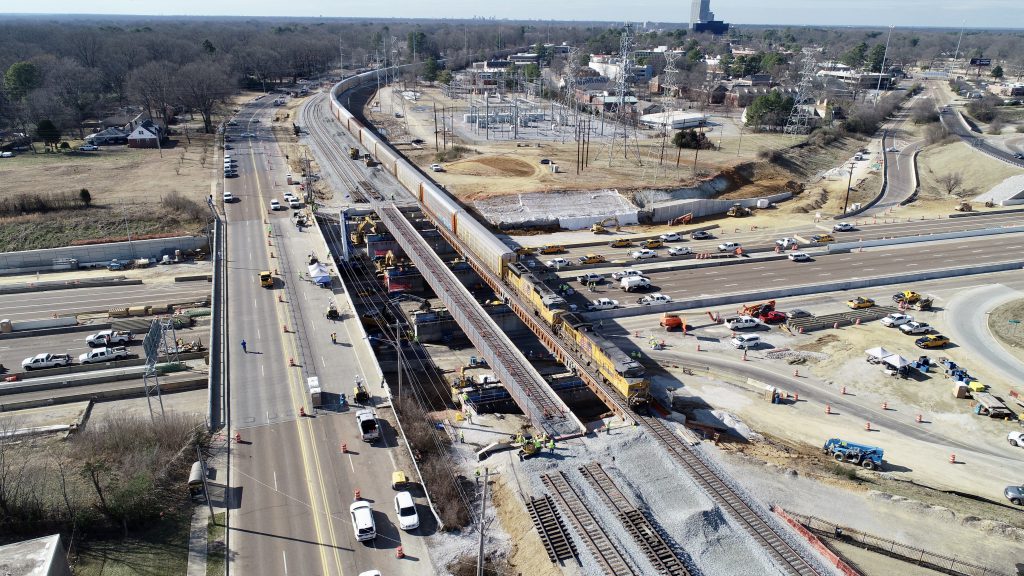It sounds like one of those math problems you encountered in school:
How do you move a 342-foot, two-million-pound bridge from point A to point B while at the same time allowing a train traveling at an average speed of 45 miles per hour to continue over the adjacent track bridge?
For Kiewit Infrastructure South Co., this was a real-life challenge on behalf of the Tennessee Department of Transportation (TDOT) — and one the team has solved with precise planning and execution.

Using the ABC method
Work on a Norfolk Southern railroad bridge is one aspect of MemFix 4, a project in east Memphis, Tennessee, that involves repair and replacement of four bridges over Interstate 240.
The structures date to the late 1950s and early 1960s. Time, traffic and current seismic requirements meant the bridges needed to be overhauled.
But construction closures on these bridges, which carry traffic over one of the busiest roadways in the state, required thoughtful scheduling.
Kiewit used Accelerated Bridge Construction (ABC), a method it’s employed on several other projects, to limit interstate closures to 57-hour periods from Friday evenings to Monday mornings and to speed the overall construction schedule.
Addressing special challenges
A “bridge farm” was established about two miles from the locations of the existing bridges to assemble the pre-fabricated structure steel bridge units. From there, they were transported using self-propelled modular transports — special equipment designed to handle extra-heavy loads — and set in place using a crane.
While the entire project was “highly engineered, coordinated and orchestrated,” said Project Manager Dave Paris, the railroad bridge posed a special challenge.
“Norfolk Southern’s requirements were that they would never have a full two-track outage anytime during the project.”
What’s more, the job site had tight right-of-way constraints.
“There’s a retail shopping center on one corner and transmission towers on another. It’s bordered by another roadway bridge to the south and I-240 underneath it,” he said.
Bridge slide a first
To accommodate those obstacles, Kiewit and the project designer elected to use bridge slide technology — a first for TDOT and the state of Tennessee on an active rail bridge.
A new all-steel permanent superstructure of two single-track bridges was built on temporary foundations parallel to the existing bridge. The temporary “shoofly” alignment allowed crews to remove the old bridge, construct the new foundations and continue rail traffic.
Over two weekend interstate closures in February, 10 100-ton push/pull jacks were used to laterally slide the two-million-pound track bridge 35 feet onto the permanent substructure.
The slide system uses a stainless steel slide track; a slide shoe made of a Teflon-type material fits inside. Contact between the track and the shoe creates a smoother, low-friction surface to slide on.
“It’s a completely synchronized system,” said Paris. “The slide tracks with the push-pull jacks were all hydraulically linked to push and pull at the same rate and same speed across the 35 feet.”
‘Exceeded our expectations’
Thanks to the innovative ABC schedule and special equipment, as well as the teamwork of TDOT, Kiewit, its subcontractor, the project designer and Norfolk Southern, the formula made a difficult problem on paper a successful reality.
“Not only is it an accelerated project, but also a complicated one for which Kiewit has had to meet some high expectations,” said TDOT Operations District Engineer Brandon Akins.
“Even with these challenges the entire team has really come together to create something that has met and exceeded our expectations.”
The project is expected to be complete this summer.




